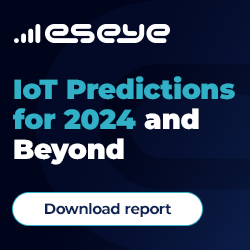Nexar Behavioural Maps to Humanise Robot Drivers
- September 14, 2022
- William Payne

AI computer vision company Nexar has released its driver behavioural data set. The data can be used to adapt future autonomous vehicles to driving styles required in particular areas, making them safer in different city neighbourhoods.
Nexar’s Driver Behavioural Map gives insight for different road segments, driver types, weather, and road conditions. Nexar’s dash cams capture crowd-sourced driving data of human driving behaviour for over 160 million miles per month in the United States. The dash cam sourced data is then aggregated and overlaid on a high definition base map designed for use in autonomous and assisted driving.
As local agents who have driven in an area know more than agents who have not, either autonomous or human, AVs that use Nexar’s real-time data can humanise their driving by training according to the local driving culture and habits. AVs can use these maps to adapt their behaviour in particular neighbourhoods in deciding when to switch lanes before a turn, how to decelerate when cornering, or where virtual stop lines lay.
Nexar’s Driver Behavioural Map accounts for speed distribution, acceleration distribution, turn probability at intersections, switching lanes probability, and virtual cross-walks, among many others. Behaviourally trained AVs should better understand, measure, and benchmark safety-related behaviour (stop lines, school zones etc.), as well as drive better based on road conditions and visibility.
“A self-driving car that drives only according to a raw map would be an immediate danger due to its robotic style of driving,” said Eran Shir, Co-founder and CEO of Nexar. “It’s not necessarily that humans drive better than robots, it’s that AVs need a lot of human data obtained by those who have driven through a particular area. Without even being aware, we make hundreds of decisions that adapt to local conditions, culture, and comfort each time we get behind the wheel. AVs need to sync into this behaviour in order to provide the most secure and comfortable ride.”
“Nexar is used by both commercial and ordinary drivers, during all hours of the day, on different road segments, and in all weather conditions,” said Shir. “There is no more efficient or cost-effective way to collect this diverse set of human driving data that is such a crucial part of our journey to advance a safe future for autonomous driving. With the right data, an AV operating off of Nexar’s Driver Behavioural Map will continue on the road to becoming indistinguishable from a human-driven car in terms of the flow of driving.”





